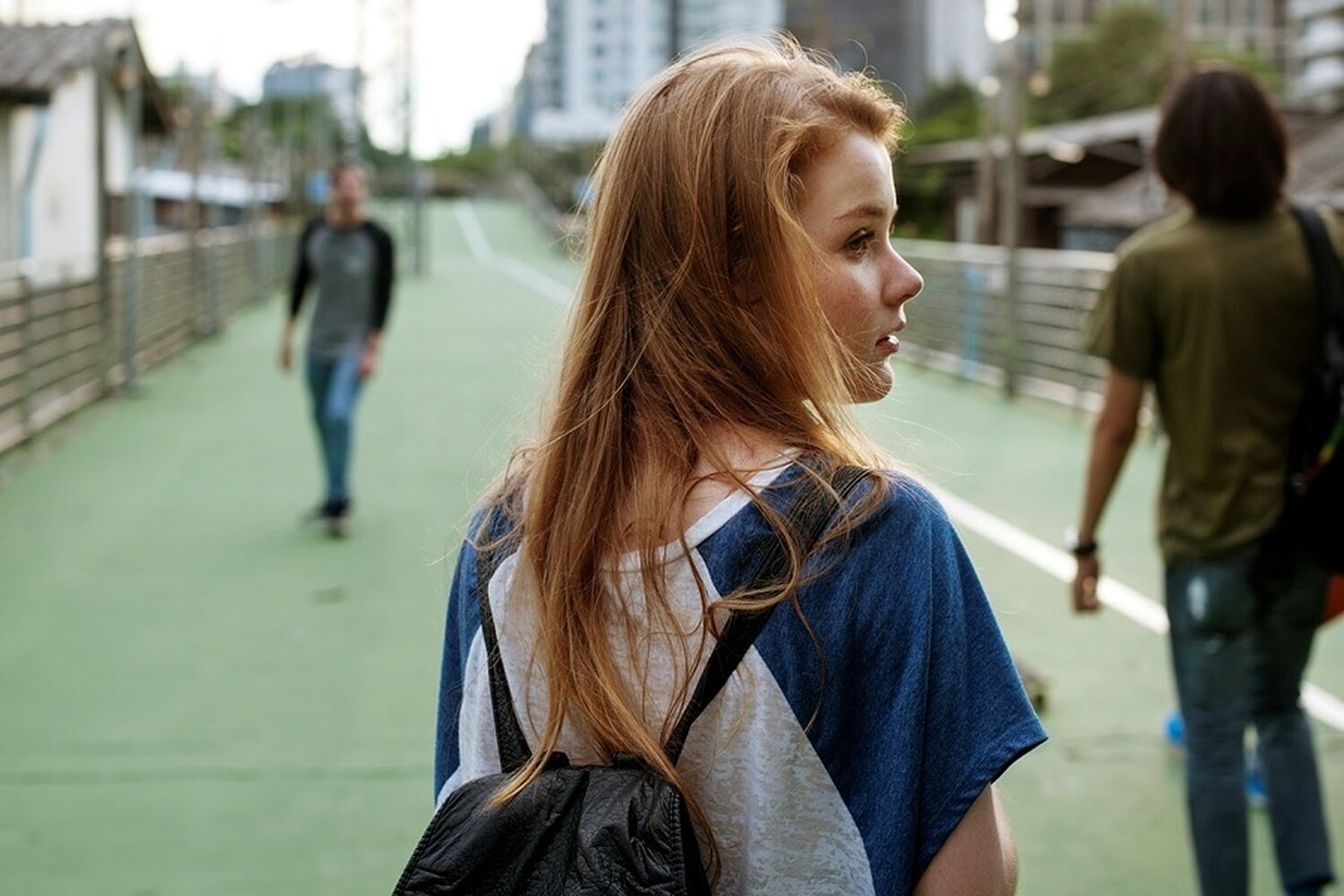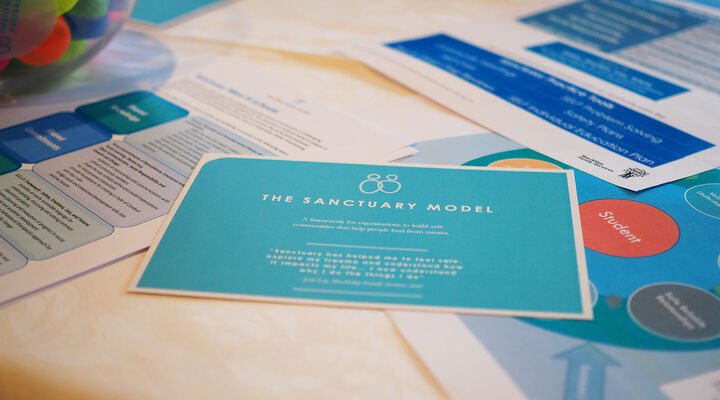Written by MacKillop Family Services CEO Dr Robyn Miller, this article first appeared in Parity magazine, Volume 34: A New Direction Home: The Future of Leaving Care.
The tragedy of homelessness for many young people leaving state care is totally unacceptable, yet it continues to happen on our watch. The 2020–21 Victorian budget allocation of $64.7 million at last provides some answers and has allowed for the universal implementation of the Home Stretch program. Whilst this recent extension of care in Victoria is a watershed moment, there is still so much to do nationally to ensure that care‑leavers have access to ongoing support and stable housing.
From a human rights perspective, the transgenerational trauma that leads many children into out‑of‑home care demands that the ‘lucky country’ provides a more equitable and proportionate response. We know that the impact of childhood abuse, neglect, and abandonment is ongoing, and too often has a lifetime impact. We know more now about the extraordinary violence, chaos, and instability that children and young people have experienced within their families prior to entering care, and at times while in care, and the devastating impact. The complexity of their ongoing needs is predictable, and the prevention of homelessness is possible. Federal and state governments can no longer turn a blind eye and tolerate the current level of care leaver’s homelessness as an inevitable consequence.
‘What can we do better?’ is a question we continually ask at MacKillop Family Services. This ethical imperative and drive to improve is at the heart of the Outcomes 100 project which commenced in July 2018. The Outcomes 100 project involves proactively engaging in deep dive reviews into young people placed with MacKillop’s residential care services. Central to each panel discussion is a deep listening to the young people in care and the presentation of young people’s worries and wishes. Amongst the richest information from the research was from young people themselves. What were their worries and wishes? The Outcomes 100 data showed that second only to their concern for their families, was anxiety about leaving care. Their anxiety related to questions like ‘Where will I live?’ and ‘How will I survive financially?’
What we have learnt from these reviews and our analysis of the data, particularly in relation to the characteristics of young people in out of home care, provides compelling evidence to inform the development of models of extended care.
Most children and young people (80 per cent) reviewed as part of the Outcomes 100 project were found to have diagnosed and significant mental health issues with 60 per cent having experienced drug and alcohol misuse at some time. More than half (55 per cent) of the young people reviewed were known to have self‑harmed or attempted suicide. Due to their experiences and vulnerabilities, young people in residential care are at high risk of being targeted for sexual exploitation. Outcomes 100 data found 43 per cent had experienced sexual exploitation at the time of, or prior to, the onset of their current placement.
Also highlighting the diversity of those residing in residential care and the need for individualised and flexible approaches to support is the significant proportion (37 per cent) of the Outcomes 100 cohort of young people who have a diagnosed disability or learning disorder. This proportion contrasts with the Australian Institute of Health and Welfare data indicating that 15 per cent of children in out of home care at 30 June 2017 had a disability. The Outcomes 100 disability status data is nearly identical to the more recent Commission for Children and Young People (CCYP) Keep Caring inquiry in which a random review of care leaver files found 36 per cent had a disability. Of the young people found to have a disability, the Outcomes 100 data showed 27 per cent of young people reviewed had a formally diagnosed intellectual disability and 13 per cent had a diagnosis of Autism Spectrum Disorder, which includes young people diagnosed with Asperger’s Syndrome.
Since its inception over 160 young people have been the focus of these reviews in Victoria and New South Wales. As CEO, I chair each panel review which is part of a thoughtful process of critical reflection involving between eight and 25 participants. Informing each review are summary reports prepared by the case worker, house supervisor and therapeutic specialist together with other key assessments and reports. This preparation takes a lot of work and going back to read earlier assessments, tracking down information from child protection and going back to answer the gaps in our understanding that become obvious. If we are truly ‘trauma informed’ we must understand the developmental and trauma history and have a family centred approach that is inclusive of the family. Each panel generally takes 1.5 hours per young person and the senior child protection, mental health, cultural consultants, and education personnel who attend are critically important. Outcomes 100 panels are usually scheduled to review all the young people residing in the one home on the one day. The broader residential home compliance and staffing stability patterns are also considered, along with the critical matching and peer group dynamics.
The process for Outcomes 100 case reviews involves collaboratively engaging the key professionals and carers in a young person’s life to:
- develop a joint understanding of the key issues, achievements, views, and wishes of the young person and their family
- promote information sharing
- develop an action plan with agreed tasks and responsibilities to address any identified issues or systemic blockages.
An initial report Outcomes 100: Residential Care Case Reviews Summary Report released in 2020 presents learnings and data from the first 100 young people reviewed in Victoria. The rigorous gathering of the histories of these young people and synthesis of all the available information has enabled us to gather an accurate and detailed data set.
In what has been a rich quality improvement process, decision making has been reviewed, and behaviour management responses reflected upon and either endorsed, respectfully challenged, or sometimes directly altered.
There is a significant body of research describing the poorer outcomes for many young people leaving out-of-home care. Most recently, in December 2020, the CCYP tabled Keep Caring: a systemic inquiry into services for young people transitioning from out-ofhome care. The inquiry confirmed that it is young people who leave residential care or who experience high levels of placement instability who are most at risk of experiencing homelessness or becoming involved in the youth justice system.
The data gathered by MacKillop through the Outcomes 100 process shows that instability is the norm in residential care. Of the 100 young people, 55 had had resided in their current placement for under six months and 85 for under 12 months. Those reviewed during the Outcomes 100 process are part of the cohort of young people which the CCYP inquiry identified as most at risk of poor post-care outcomes.
By asking ‘what has worked?’, ‘what has not worked?’ and ‘what is missing?’, the Outcomes 100 case reviews and the co-ordinated actions that follow seek to address key system challenges and blockages. The aim? To create a safe and stable environment with the opportunities required for these young people to chart a course towards a hopeful future of connection and contribution.
Almost all of the young people reviewed (87 per cent) are known to have suffered significant family violence in their childhood. All 100 children and young people have experienced multiple forms of abuse and 88 per cent have experienced multiple episodes of physical abuse within their family of origin, with similar rates of neglect and emotional abuse. Almost half (48 per cent) have documented experiences of some form of sexual abuse (usually intrafamilial) prior to entering care. It is critical that these young people receive trauma‑informed care by being provided the space and support to heal. With 16 per cent of these young people identifying as Aboriginal or Torres Strait Islander, culturally safe practice and prioritising connection to community and culture is paramount.
The Outcomes 100 data gives us a clear and detailed understanding of the experiences, vulnerabilities, and developmental needs of this group of young people residing in residential care. We must use this knowledge to improve the experience of out-of-home care and to shape extended care options that are sufficiently flexible to meet the needs of each of these young people as they approach adulthood.
Some of the learnings from successfully piloted programs in the United Kingdom (UK) may support the best outcomes for our young people. In the UK, The Break piloted the Staying Close Staying Connected (SCSC) project which began in January 2018 and worked in three local authorities (LAs). This project offers an insight into what a holistic pre and post move support package might look like for young people leaving
residential care. SCSC provides supported accommodation and individualised support for residential care leavers to help develop stability, support networks, and independent living skills. The Break SCSC project aims to improve support and journeys for residential care leavers moving on to independent living. An evaluation published in 2020 showed improved outcomes for residential care leavers. These outcomes were achieved through a supported accommodation model featuring a greater focus on matching to facilitate house-share compatibility; individualised therapeutic support; intensive life skills, housing and wellbeing support; workforce development to improve leaving care awareness; mentoring and a peer community to improve social connectedness.
We need to consider innovative and intensive programs like SCSC as we seek to answer the question ‘what can we do better?’ We also need to apply learnings from closer to home and maintain our focus on improving the experience of out of home care so that a successful transition to independence is possible. We know these young people deserve better. This means building in therapeutic repair work and the family-centered practice that they crave. It means privileging a trauma-informed response to the needs of young people recovering from cumulative harm and offering flexible and individualised support that values cultural connectedness and is responsive to their disability, learning, and/ or mental health needs.
The Outcomes 100 Residential Care Case Reviews Summary Report made specific recommendations aimed at optimising the outcomes of young people leaving residential care. These included the funding of all residential homes as therapeutic, together with increasing the range of residential care options available, in particular adequately funded two-bed homes. It is only by allowing staff the capacity to spend individual time with young people within a more stable care environment that we will begin to realise residential care as the place of possibility and recovery it should consistently be.





